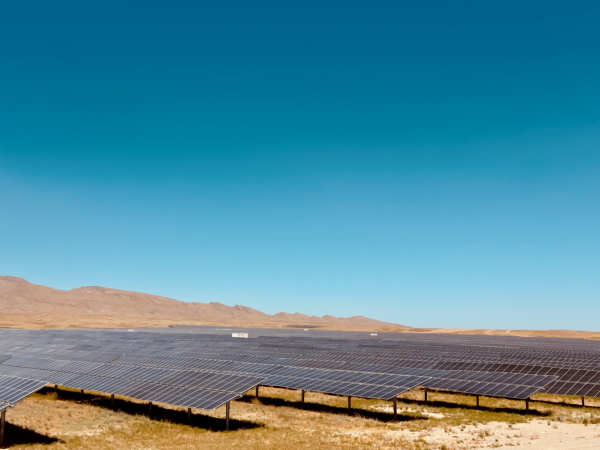Energy cooperation has long been a cornerstone of collaboration between China and Central Asian countries. The first China–Central Asia Summit in 2023 underscored the need to expand cooperation across the entire energy value chain, including traditional sectors such as oil, gas, and coal, as well as renewables like hydropower, solar, and wind. It called for deeper cooperation in nuclear energy for peaceful use, the implementation of clean energy projects, and joint efforts to realize innovation-driven, green, and inclusive development.
China Huadian Corporation Ltd. (CHD), one of China’s major power generators, has responded actively to the summit’s call and the Belt and Road Initiative (BRI) by advancing energy infrastructure, offering technical support, and cultivating local talent in Central Asia.
Powering local development with green energy projects
Kazakhstan, home to the 15th largest natural gas reserves in the world, has partnered with CHD to strengthen power security and accelerate energy transition. One flagship collaboration is the Aktau 160 MW gas turbine project, the first in Central Asia to adopt an RMB-linked electricity pricing model and RMB-based financing. The project also contributed to Kazakhstan’s revision of its Electricity Law. Construction is expected to begin in the second half of 2025, with annual power generation exceeding 1 billion kWh upon completion.

A view of the Shieli 40 MW solar power plant [Photo/sasac.gov.cn]
In southern Kazakhstan, CHD’s Shieli 40 MW solar power plant is nearing completion. Located in the Kyzylorda Region, the project will generate around 70.81 million kWh annually once operational.
In Uzbekistan’s Jizzakh region, at an altitude of 2,700 meters, CHD’s 500 MW wind power project is under construction. Nearby, the CHD Jizzakh 500 MW solar project, a flagship of China–Uzbekistan cooperation under the BRI, is also progressing. Once operational, it will supply over 1.1 billion kWh of green electricity each year, benefiting some 400,000 local residents and creating jobs for the community.

A view of the CHD Jizzakh 500 MW solar project, a flagship of China–Uzbekistan cooperation under the BRI [Photo/sasac.gov.cn]
CHD is also advancing mergers and acquisitions for Kazakhstan’s 69 MW and 132.5 MW solar projects, and progressing with the early-stage development of a 166 MW solar plant in Kyrgyzstan. These efforts further expand CHD’s green energy footprint across Central Asia.
Exporting Chinese energy technology for sustainable growth
To support Kazakhstan’s Green Economy Plan, which aims to reduce energy intensity and environmental impact, CHD has promoted the integration of its technical expertise and management experience with local resources. In 2024, Kazakh experts visited CHD coal and gas power plants in China and praised the company’s advanced practices and clean development models.
In early 2025, CHD dispatched three expert teams — totaling 20 specialists — to support Kazakhstan’s flexible grid transformation efforts. Local companies lauded CHD’s contributions, noting their trust in Chinese expertise and welcoming further cooperation in reliability, automation, economic operation, and environmental management. CHD’s emphasis on R&D, modern operations, and technical exchange is set to inject long-term momentum into what has been called the next “Golden 30 Years” of China–Kazakhstan relations.
In Uzbekistan, CHD’s Jizzakh solar project introduced an innovative “power + industrial park” development model. Chinese-made components — such as PV modules and inverters — enhanced the project’s efficiency and symbolized the successful integration of Chinese manufacturing with local development goals.
Cultivating talent for a sustainable development
Alongside its infrastructure initiatives, CHD is also investing in talent development across Central Asia. In partnership with North China Electric Power University, Xinjiang University, and Almaty University of Power Engineering and Telecommunications, CHD launched the China–Central Asia Energy and Power Innovation Alliance, which promotes tailored education programs for local students.
Participants in the joint postgraduate program have praised the experience, saying their studies in China provided critical knowledge and practical skills to contribute to their home countries’ energy development.
At project sites such as Shieli Solar in Kazakhstan, local professionals trained in China are now playing important roles in operations — facilitating communication, coordination, and cultural understanding. Their involvement reflects CHD’s broader commitment to localization and shared growth.
(Executive editor: Cui Feng)